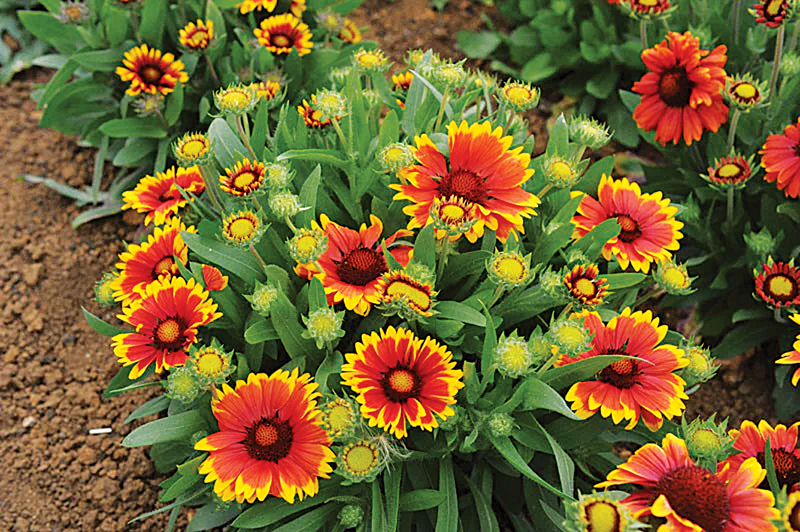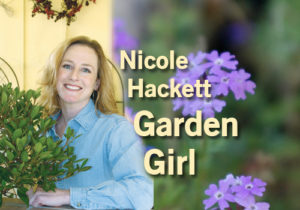Winter showers are about to bring a whole lot of flowers

 CLAYTON, CA (May 18, 2023) — Thanks to all the rain, spring planting is once again fun.
CLAYTON, CA (May 18, 2023) — Thanks to all the rain, spring planting is once again fun.
Folks have been flocking to the nursery in search of everything fresh and floral. The plants look incredible, and everyone is excited to get back into the garden.
There are a few great plants for sun and for shade that can almost guarantee successful growing.
Nepeta is a family of plants that resembles lavender. This herbaceous perennial has gray foliage and two-lip shaped periwinkle blossoms. Nepeta thrives in full sun, is water-wise and bee-friendly. Because Nepeta takes a winter rest, it will live in the garden for decades.
Popular Nepeta family members include Six Hills Giant, which reaches 30 inches tall and 24 inches wide, and Walker’s Low, which grows to 12 inches tall by 2 feet wide. This perennial is absolutely tough as nails and will pop in any border, dry creek bed or terraced slope.
Gaillardia is another family of perennials that has been available for the past 25 plus years. This old-fashioned plant is commonly called the blanket flower. It has large daisy-shaped flowers. As the petals fall, the center of the plant becomes a decorative sphere.
Most Gaillardia will be 12-14 inches tall and about 20 inches wide. The colors are always hot. You’ll find reds, SpinTop, oranges, Goblin and Mesa Yellow. These perennials love full sun, are water-wise and the bees and butterflies cannot get enough of them.
Not your grandma’s geranium
Tiny Monster Geranium is one of those plants you must see to appreciate. Folks seem to scoff at the idea of adding a geranium to their garden, but Tiny Monster is a cranesbill geranium that doesn’t resemble grandma’s geranium at all.
This pillowy herbaceous perennial makes a great front-row plant, with scalloped leaves and magenta flowers. I describe its growth as that of a king-size pillow on the ground. It looks best planted in a bed with companion plants like Salvia May Night, Abelia Kaleidoscope and Kniphofia Papaya Popsicle. Tiny Monster tolerates almost six hours of sun.
Phlomis Fruticosa, or Jerusalem sage, is a stunner. This evergreen has fragrant, large gray leaves that support tall spikes of butter yellow whirls of two-lip shaped flowers. You can find Jerusalem sage planted at Clayton’s gateway to downtown, with yellow flowers May through June.
This plant is more of a bush, so expect it to grow 4 feet tall and wide. They’re great on a hill, or used as an evergreen companion for crepe myrtles, since they bloom in the late summer. It’ll extend the bloom period of the landscape.
On the shady side
There are great plants to consider for those who don’t garden in full sun. Salvia Love and Wishes prefers shelter from the afternoon sun. This salvia is perennial and looks tired in the winter months. Expect Love and Wishes to reach about 30 inches tall and wide. The leaves are broad, and the flower is a long, two-lip shaped medium pink. Love and Wishes is hummingbird friendly.
Mahonia Soft Caress caught our attention a few years ago, and we have been thrilled with it. Described as a fern bush, this evergreen has dark green leaves that weep toward the ground. It’ll grow to 30 inches tall and almost 4 feet wide. Yellow flowers appear in late fall.
This shrub is Australian. It does well with low water and mostly shade to morning sun. Through the heat of summer and the frost of winter, Mahonia Soft Caress has yet to skip a beat.
Hydrangea quercifolia Jetstream is commonly called an oakleaf hydrangea. All oakleaf hydrangeas are awesome and are far more water-wise than their relatives.
They have an oak-shaped leaf of matte green that is covered with a slight pile (fuzz) and orangish stems. The pile gives the leaf an extra layer that helps with foliar moisture evaporation.
Panicle-shaped flowers start off as cream and eventually age to ruby. This type of hydrangea also boasts incredible fall color.
Whether you’re gardening in the sun or the shade, always prepare your soil for your installations. If your soil looks good, your plants will be happier. Loosen the roots of all perennials and shrubs you plant, cutting away any compacted roots. Always add a planting mix with your installations, and remember that flowers want to be fertilized.
Nicole is the Garden Girl at R&M Pool, Patio, Gifts and Garden. You can contact her with questions or comments by email at gardengirl94517@yahoo.com
